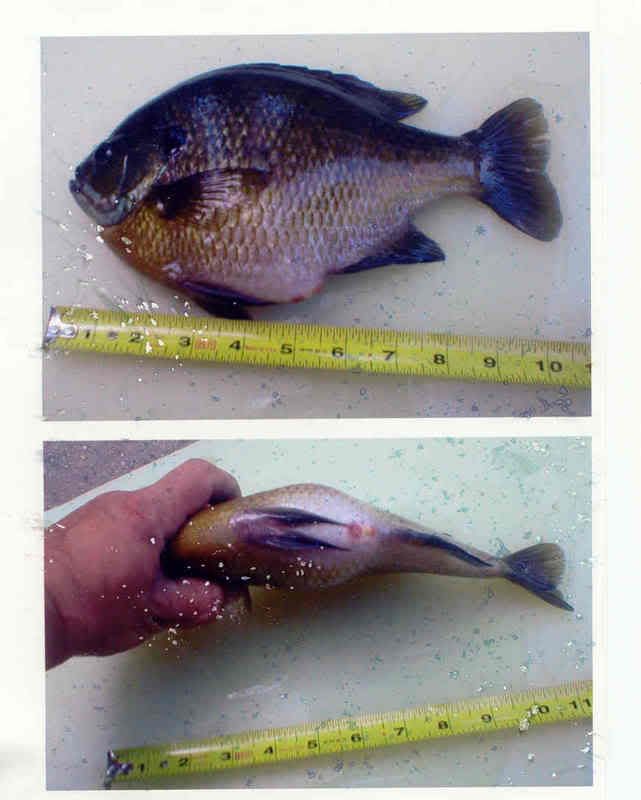What to do? - 10/18/07 03:34 AM
O.k. got 163 Condello gills in a floating cage that went from an average of 4.36 inches in April (or was it May?) to a mode of 7 inches and the most numerous -- in October. I had fish to 8 1/2 inches but I had some larger fish in the mix from the beginning so I didn't count them. Good growth and good relative weights. 7 inchers would probably be the male breeding stock.
Well I just drained my 3/4 acre pond and saved about 25 gills to a pound with many in the 14 to 15 oz. range. Very high relative weights and quite wide. Real beauties!
I'd like to cross my best fish with Condello's this spring in a breeding pond to not only use the fast growing genes Condello has produced, but add some genetic diversity. But what chance of scoring will these Condello 7 inch males have if several 9 1/2 to 10 inch Baird males are on the bed? Won't the females gravitate to the bigger Baird males?




Maybe I should use my larger males and cross with female Condello gills? Or if there are enough fish in the pond it's not something to be concerned about. Most literature I have seen says 30 to 50 pairs per acre and since the breeding pond is only 1/10 acre that does not allow a lot of breeding pairs.
Thoughts?
Well I just drained my 3/4 acre pond and saved about 25 gills to a pound with many in the 14 to 15 oz. range. Very high relative weights and quite wide. Real beauties!
I'd like to cross my best fish with Condello's this spring in a breeding pond to not only use the fast growing genes Condello has produced, but add some genetic diversity. But what chance of scoring will these Condello 7 inch males have if several 9 1/2 to 10 inch Baird males are on the bed? Won't the females gravitate to the bigger Baird males?
Maybe I should use my larger males and cross with female Condello gills? Or if there are enough fish in the pond it's not something to be concerned about. Most literature I have seen says 30 to 50 pairs per acre and since the breeding pond is only 1/10 acre that does not allow a lot of breeding pairs.
Thoughts?

